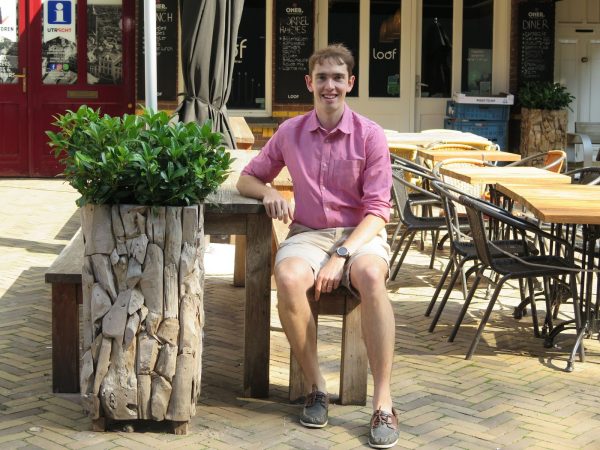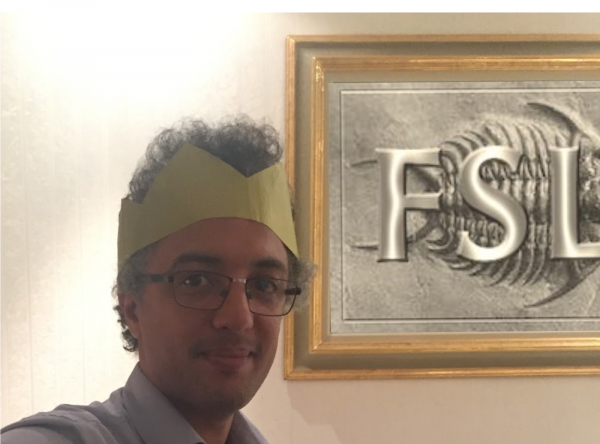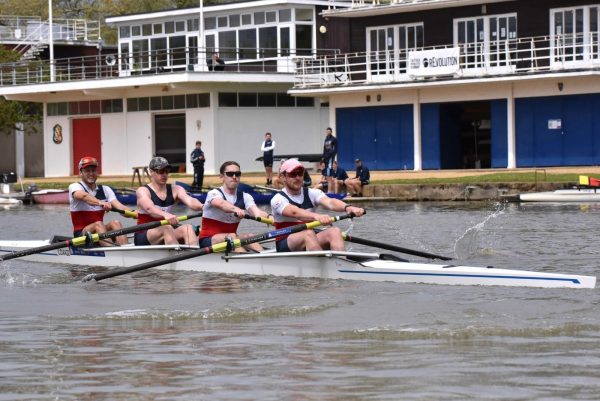By Agah Karakuzu

The MRM Highlights Pick interview this month is with William T. Clarke and Saad Jbabdi, researchers at Oxford University. Their paper is entitled “FSL‐MRS: An end‐to‐end spectroscopy analysis package”. It was chosen because their software and algorithms were shared open-source, and integrated as a package for the FSL software.
To discuss this Q&A, please visit our Discourse forum.
MRMH: How did you get involved in MRI research?
William: I first got involved in MRI while doing a chemistry degree here at Oxford, specifically when working with Chris Rodgers on a 9-month project dealing with phosphorus cardiac spectroscopy. Afterwards, I ended up doing a doctorate in the same field, and then moved on to brain imaging for my post-doc, which also focused on spectroscopy.
Saad: I started off my career by doing a degree in applied maths in France, which was when I first heard about signal processing. I found this topic very interesting, and so I followed that path for a while. Then, later on, I heard someone from GE give a talk about imaging the body, which I found such an interesting application of mathematics. That prompted me to join GE for a little bit doing X-ray tomography. After working with them for half a year, my supervisor mentioned a lab that does brain imaging that I might be interested in, and so I pursued an opportunity to do a PhD with them. I was really fascinated by the fact that they studied the brain and needed a lot of maths in order to do so, specifically in diffusion MRI applications. Later on, I joined Oxford — where I still am — because the lab here was one of the leading groups working on diffusion MRI.
MRMH: What convinced you to spend time developing this FSL-MRS tool? What gap does it fill in the current landscape of open-source MRS tools?
William: Our center has about 16 ongoing studies that use MRS. All these projects involve people who are mostly non-expert spectroscopy users. Running the imaging sessions is fairly straightforward, whereas MRS data analysis can be a really tricky point for them. Basically, the existing pipelines weren’t very user friendly for non-experts. So, in the context of this paper/software, there was certainly that element — the desire to produce something that did everything our local users needed. And we hoped that it would go on to be a useful tool for other researchers around the world, too. And the second reason, which is really what first got me and Saad working together, was the need to analyze dynamic spectroscopy data, which we also deal with in this software.

Saad: I was one of the contributors to FSL, and I was always frustrated by the fact that there weren’t any MRS tools for it, even though MRS was taking off in the imaging community. I even did an internal poll once to see what people would like to see next in FSL, and MRS was up there at the top of the list. So, one day, I just decided to find a way to make this happen. There was this new guy, Will, and he seemed really smart, so I just asked him to teach me about MRS, and in exchange I tried to draw him into this project of creating a tool for MRS. I would say dynamic MRS fitting is one of the major needs that is filled by this software compared with other currently available tools. With dynamic MRS, people are acquiring multiple spectra, and crucially, there are biophysical models linking across the spectra. For example, in diffusion MRS, you can have models of say non-Gaussian diffusion linking across spectra. Everyone out there just fits the spectra independently and then post-hoc fits the diffusion model. We thought we should create a framework that allows you to inform your MRS fitting with these models, so as to fit everything at once. Linking across modalities in this way can also help to boost the SNR of acquisitions with potentially low SNR. There isn’t really another tool that can do that.
MRMH: So, with this software, the idea is to provide a kind of turnkey platform, which guides people through the full MRS analysis, right? In other words, it’s end-to-end, starting with a data conversion step. You convert your raw data using a conversion module: spec2nii. Could you tell us something about MRS-NIfTI, and what users need in order to convert their raw data to this format?
William: It can be endlessly frustrating trying to get your MRS or MRSI data and all the results displayed alongside structural images. For brains it’s a bit easier, but for cases like oblique cardiac data it can get quite mind bending. But still, one of the aims is to get to the point where people can do MRS easily. That’s really the vision behind moving MRS data into an NIfTI format. The NIfTI format means that you can exploit many of the great tools that are already out there. As for what people need in order to use the converter (spec2nii), I hope very little. Which, as you can probably guess from its name, is completely inspired by Chris Rorden’s DCM2NII. There are obviously cases which are still very, very hard to handle, such as when you need to know the trajectory of a non-cartesian sequence. But yeah, for a lot of standard sequences, I think the user will have to provide very little additional information in order to use the converter.
MRMH: I really enjoyed the interactive HTML outputs. Why was it a priority for you to include this feature?
William: We included it because I think if you give people a good interface to explore the results, it can minimize the post-processing effort needed, and this makes using FSL-MRS a more pleasant experience overall. What we are now doing is looking at presenting all the relevant data in FSLeyes as a standardized interface. In the long run we hope that might ease the communication of results. In FSLeyes, the ability to zoom around in your data and look at the whole thing or a specific part is a great feature, particularly for MRSI, where you can have thousands of individual spectra in your data.
Saad: I completely agree with Will. The HTML reports are a great first pass when exploring your data. The limit to them, however, is that the user can only see what we decided they should see. Even though the HTML report is interactive, it’s still kind of far from the data. FSLeyes can offer the opportunity to dig deeper into the data, and Will is developing a plugin for FSLeyes to do just this. Paul McCarthy, the main developer of FSLeyes, has made this work much easier than it used to be in the past.
MRMH: To end off, what do you enjoy doing outside working hours?
William: During off-hours, I actually row quite a lot for the local city club. During the lockdown, I also picked up gardening.
Saad: I enjoy cooking a lot, and watching my son develop into a person.
William: You didn’t want to mention your amazing dancing skills?
Saad: I was asked about my current pastimes; dancing is behind me I’m afraid [chuckles].






It was fun to learn about the background of FSL-MRS. Thank you for a great interview Agah, Will and Saad!
Comments are closed.